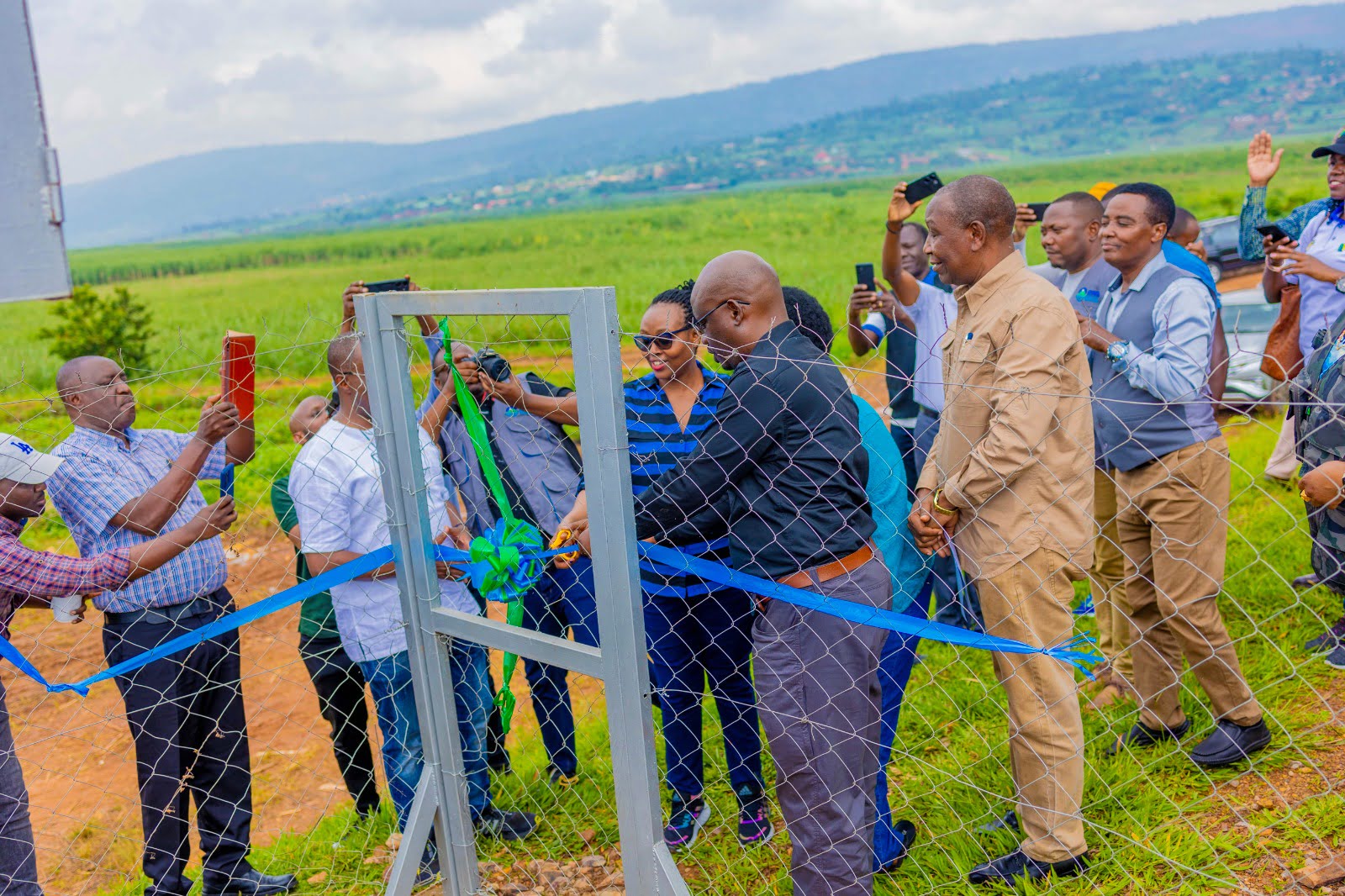NBI handed over with Rwanda the Hydrological Monitoring stations to help determine the quantity of water

Hydrological Monitoring station at Akanyaru, Nyarugenge District, Eastern Province.
Nile Basin Initiative (NBI) on November 16-17, 2023, handed over with Rwanda with the hydrological monitoring stations to help determine the quantity of water and get the information needed for planning to help implement various projects.
Florence Grace Adongo, the Executive Director of Nile Basin Initiative secretariat handed over with Hydrological monitoring stations to Emmanuel Rukundo DG of Rwanda Water Resources Board on November 16, 2023.
Those Hydrological Monitoring stations are placed on rivers and lakes to help in obtaining information that can be used to determine the amount or quantity of water in the country, by measuring the depth of water in lakes and lakes. Its abundance in dealing with the effects of climate change.

The executive Director of Nile Basin Initiative, Florence Grace Adongo, said that this project is being implemented in various countries of the Nile Basin, starting from Rwanda, and requested that it be maintained.
“This is transboundary water resources management to the republic of Rwanda; we hope that those stations will help to know the quantity of water and to make special measures of monitoring those stations. In order to cope with floods causing by the impact of climate change.” Adongo said.
The NBI visited the Akagera river and Akanyaru river located in Nyarugenge sector, Bugesera district, Eastern province on November 17, 2023 where Rwanda Water Resources Board’ s officials were given the keys to the boxes containing the water level meters.

On behalf of Government of Rwanda, Dr Emmanuel Rukundo, the Director General of Rwanda Water Board, said that Rwanda will take care on those stations.
“We will maintain these stations because they are going to help us determine the quantity of water and how we will be able to prevent floods either in Rwanda or in the Nile Basin and we hope that they will help us achieve on sustainable solutions.”
As part of this hydrological package, Rwanda has received water level and rainfall sensors, data loggers, accessories necessary for installation/ rehabilitation of the six selected stations, equipment for water discharge measurements (ADCP) dual data transmission technology (GPRS and Satellite) with the option to switch to either for compliance with the national policy and country limitations.
Niyigaba Anastase, water pollution investigation specialist at Rwanda Water Resources Board, said that the parameters they received are helpful in planning different projects.
He said: “There are many projects for our residents, there are dams on the rivers. These parameters help us to plan different projects to find out what will be possible instead of investing money that will not return. When you know the quantity of water, you can plan what the water will be used for.”
Hydrological Monitoring stations were placed in six places after a study was done to help all the countries that make up the Nile basin to get information about the rivers or lakes that Rwanda connects with other countries. These stations are located at Kanzenze, at Kanyaru, two at Rweru and Cyohoha lakes, at Muvumba and Akagera outlet.

The Nile Basin Initiative is an intergovernmental organization that was established in 1994 by the council of ministers on water affairs way back in Dar- es- Salaam, with the aim to come up this institution can help facilitate cooperation and enhance water resources management and development and ensure that there is benefit on the ground. The Nile Basin Countries are 10 include Burundi, DRC, Ethiopia, Egypt, Kenya, Rwanda, South Soudan, Tanzania, Soudan and Uganda.

